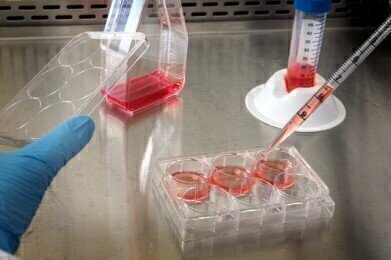Laboratory Products
What Are the Different Pipetting Techniques?
Jan 10 2022
Pipetting has come a long way since the technique was first pioneered by French chemist Louis Pasteur in the 1940s and German physician Heinrich Schnitger in the 1950s. Today scientists enjoy access to a range of different pipetting types, including:
- Air displacement micropipettes
- Positive displacement pipette
- Electronic pipettes
- Multichannel pipettes
Below, we take a look at some of the best-practice techniques used to maximise accuracy and precision when using pipettes.
Choosing the right pipette/tip combination
Selecting the correct pipette/tip combination is one of the most effective ways to improve accuracy and reduce errors. Operators should aim for the smallest air cushion possible.
Optimising immersion depth
Ideally, the tip should be immersed as little as possible into the solution. This prevents the transfer of liquid on the exterior of the tip. That said, operators should be careful to avoid shallow immersion that results in the uptake of air.
German-based biotech company Eppendorf recommends the following depths:
- 0.1 - 1 μL - 1mm
- 1 - 100 μL - 2 - 3mm
- 100 - 1000 μL - 2 - 4mm
- 1000 - 10,000 μL - 3 - 6mm
Vertical pipette position
Ideally, the pipette should be vertical to maximise liquid uptake. When pipettes are held at an angle, hydrostratic pressure changes can affect aspiration and compromise accuracy.
Pre-wetting the tip
Saturating the air cushion prior to aspirating liquid can help to improve accuracy. Ideally, the tip should be pre=wet at least three times.
Choosing the correct liquid discharge technique
When discharging liquid, the pipette should touch the wall of the target vessel. For volumes less than 10 μL, liquid can be discharged directly into the sample.
Slow and steady workflow
While laboratories can be fast-paced environments, pipetting workflows should remain slow and steady to maximise accuracy and prevent operator errors.
However, this can be tedious which is why many laboratories choose to invest in high throughput liquid handling technologies to fast-track workflows. These advanced automated and robotic systems offer a range of benefits, including optimising walk-away time for scientists and laboratory personnel. This allows highly skilled experts to redirect their attention to other tasks such as data analysis.
Find out more about the latest pipetting solutions, including technologies being used for drug development, mass spectrometry (MS), food and drink analysis, Next-generation sequencing (NGS) and Polymerase Chain Reaction (PCR) tests in ‘Liquid Handling - What, Why & How?’
Digital Edition
ILM 49.5 July
July 2024
Chromatography Articles - Understanding PFAS: Analysis and Implications Mass Spectrometry & Spectroscopy Articles - MS detection of Alzheimer’s blood-based biomarkers LIMS - Essent...
View all digital editions
Events
Jul 28 2024 San Diego, CA USA
Jul 30 2024 Jakarta, Indonesia
Jul 31 2024 Chengdu, China
ACS National Meeting - Fall 2024
Aug 18 2024 Denver, CO, USA
Aug 25 2024 Copenhagen, Denmark

-(1)-(1).jpg)


24_06.jpg)













